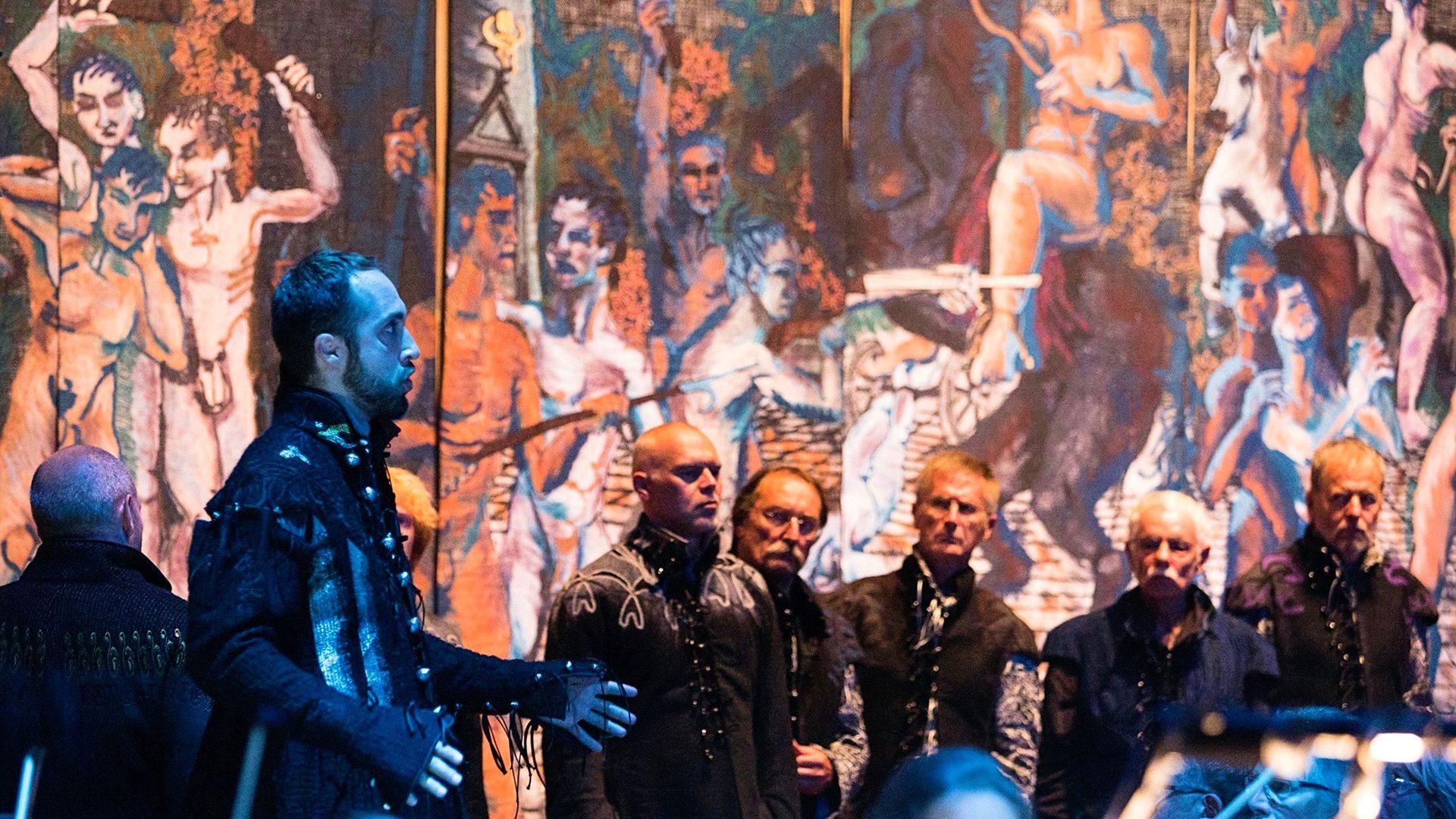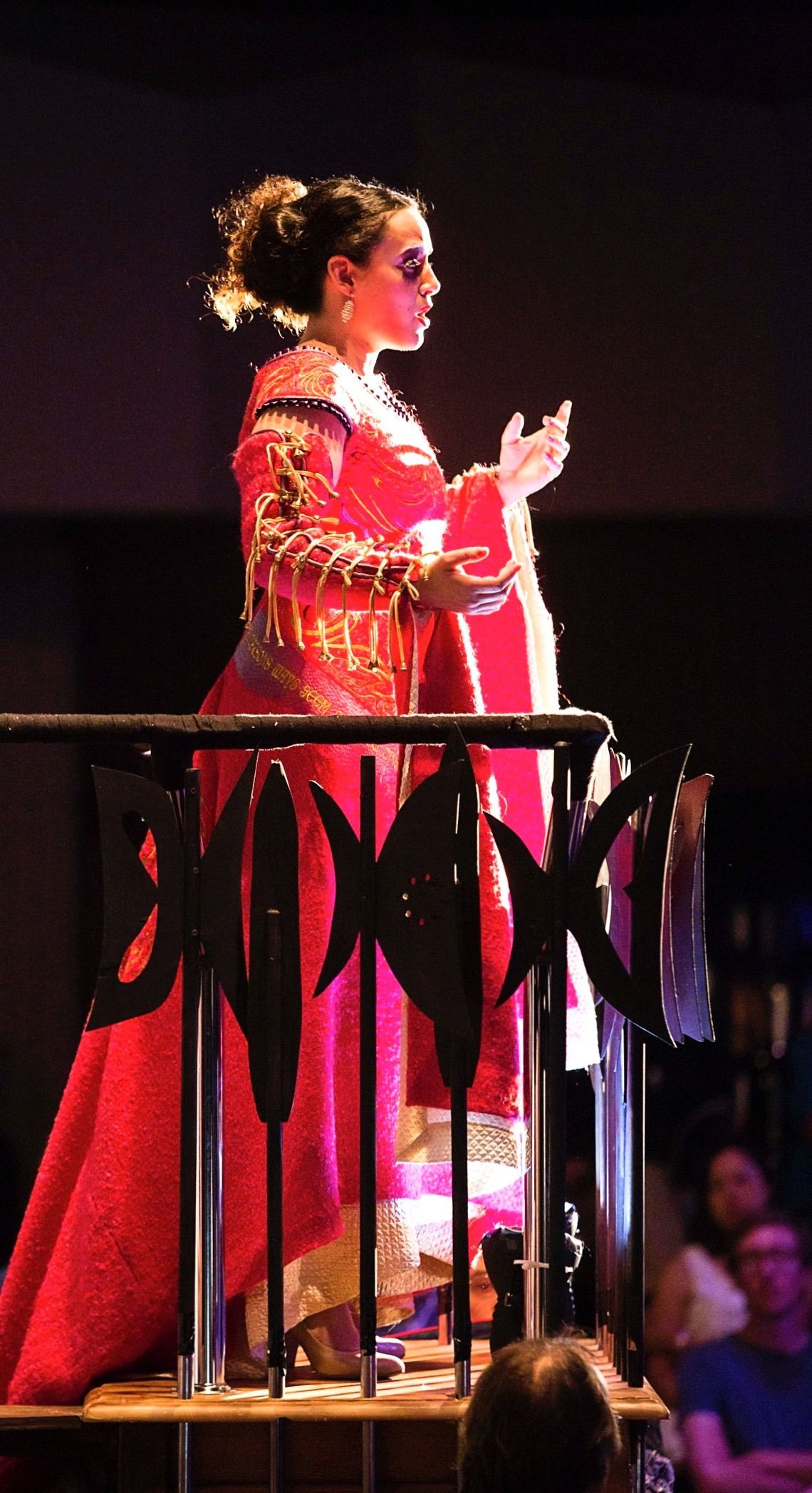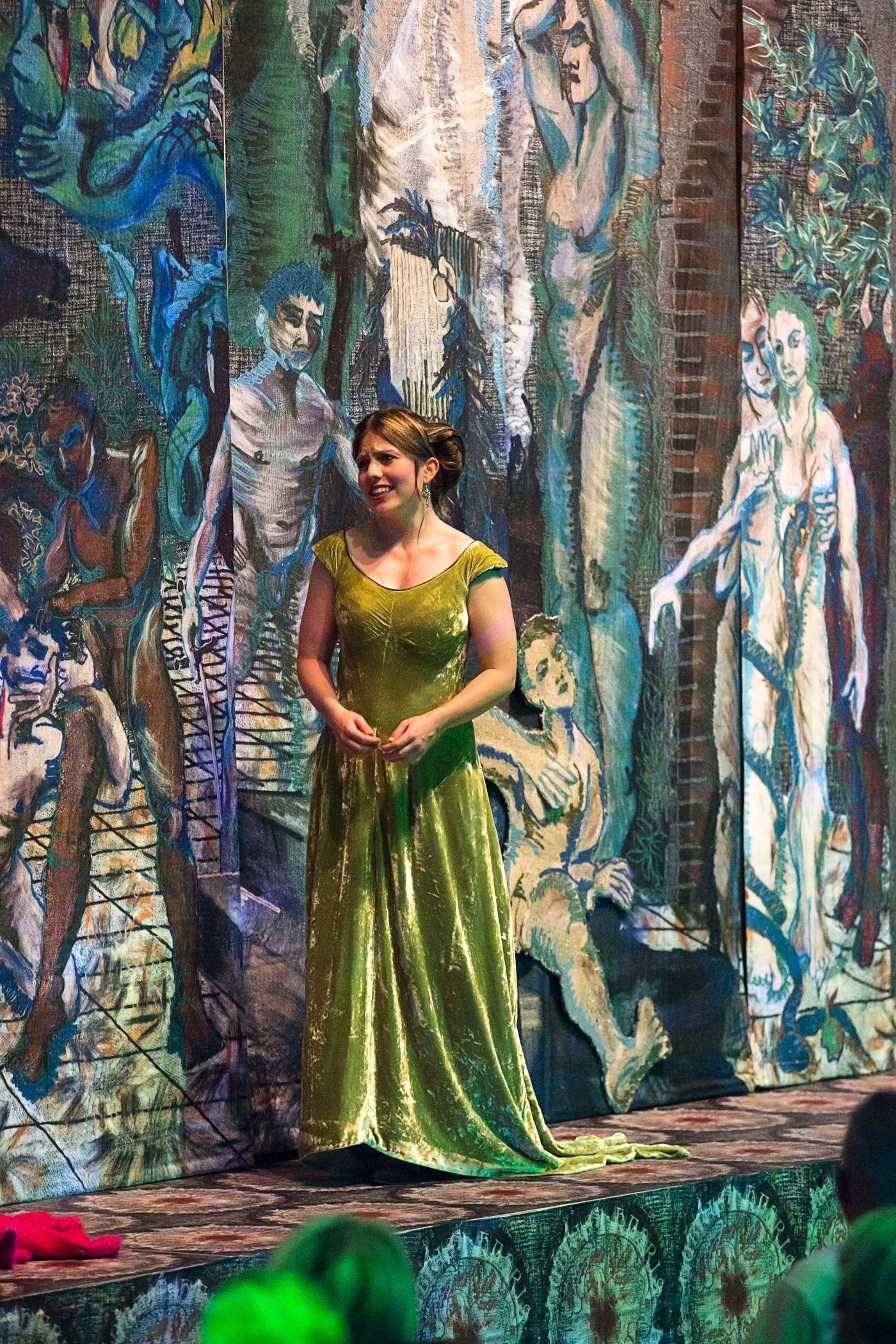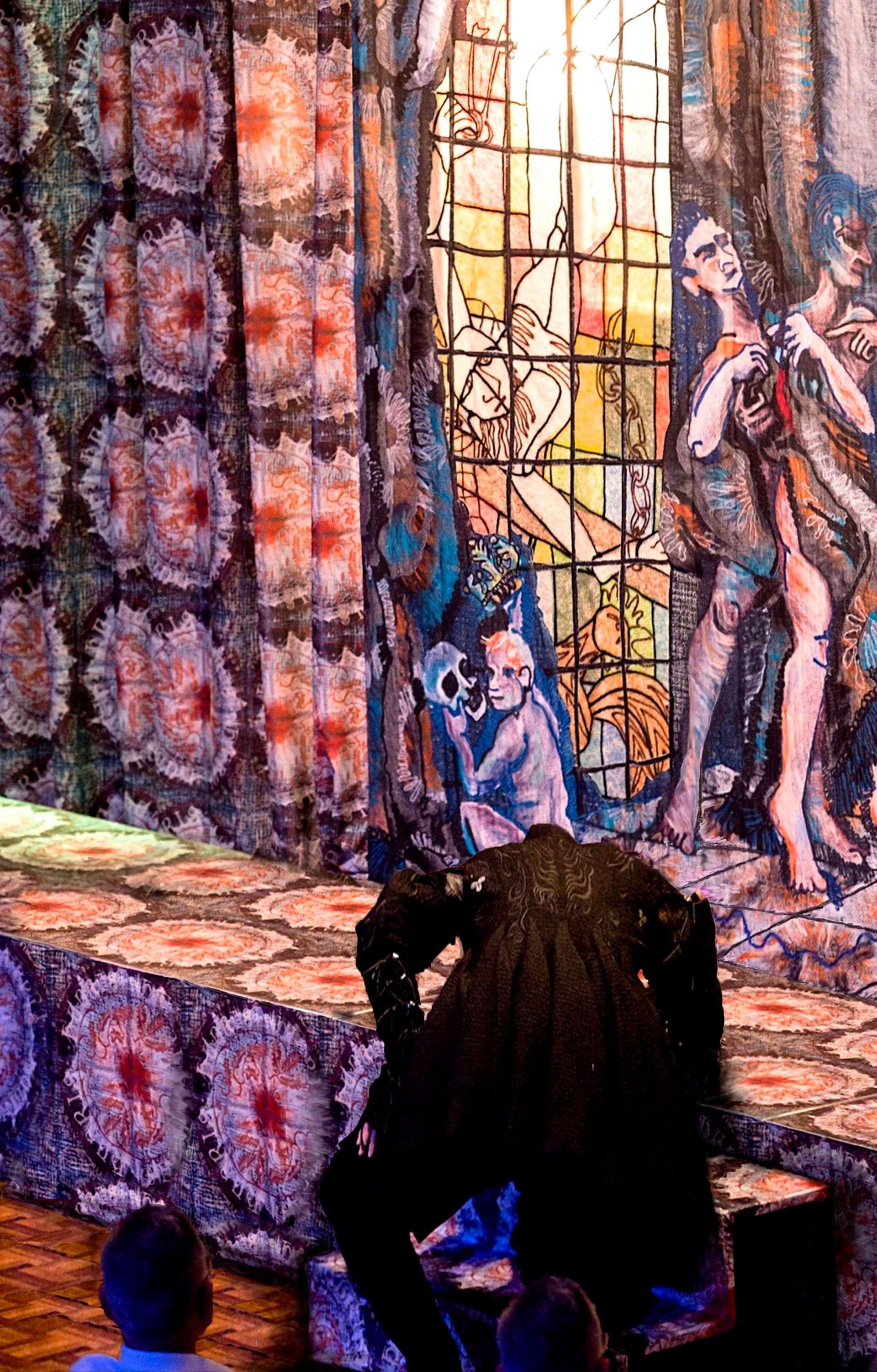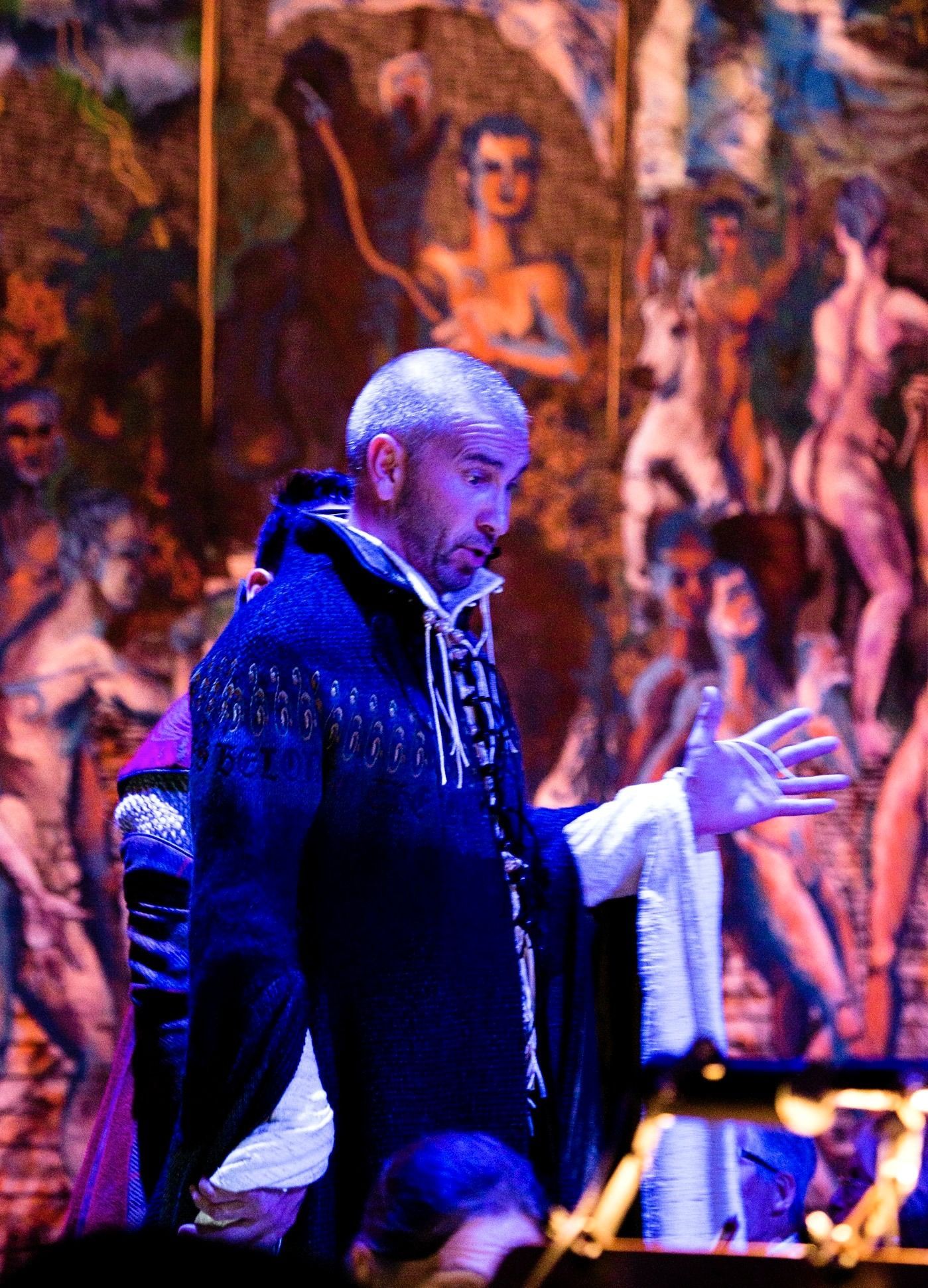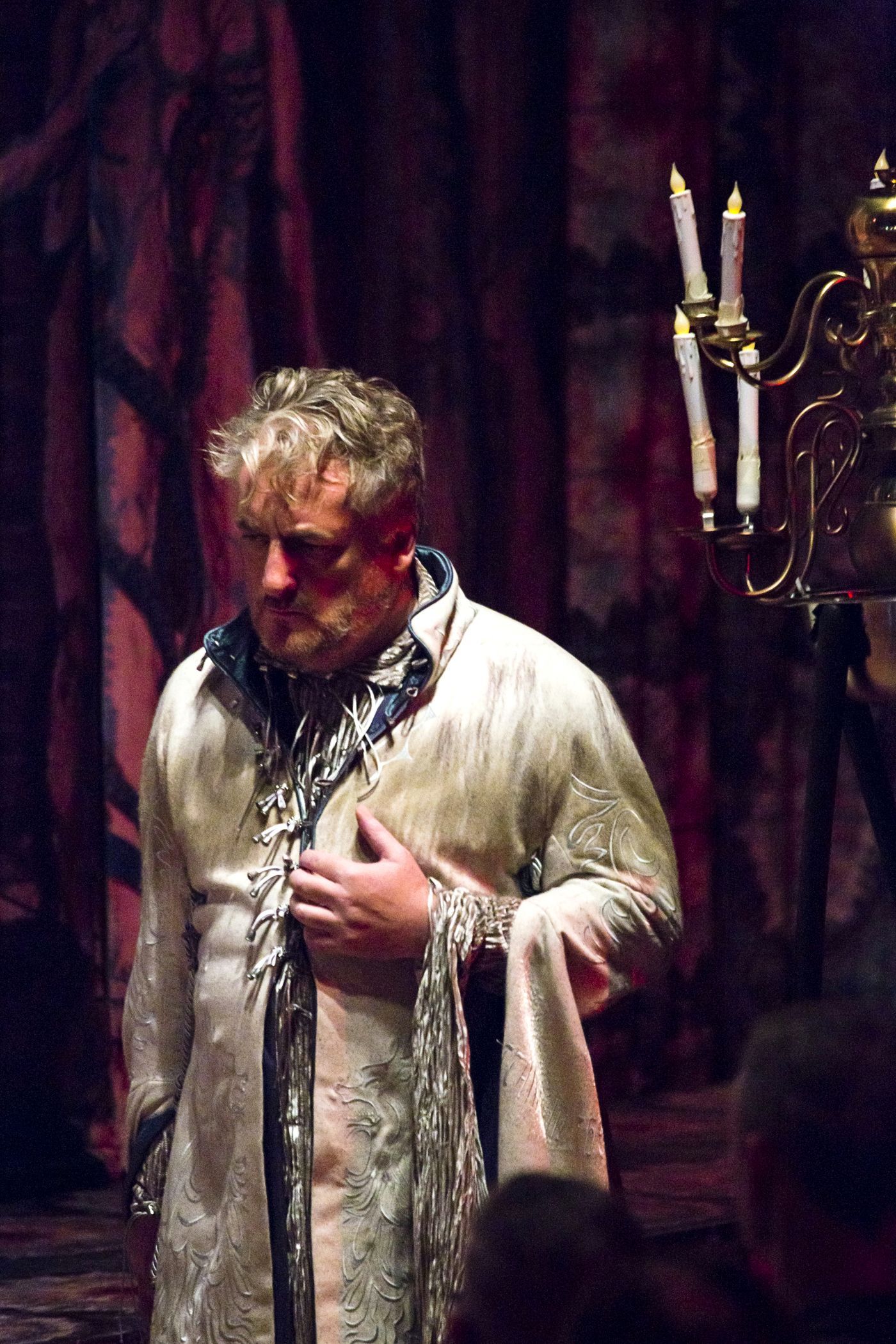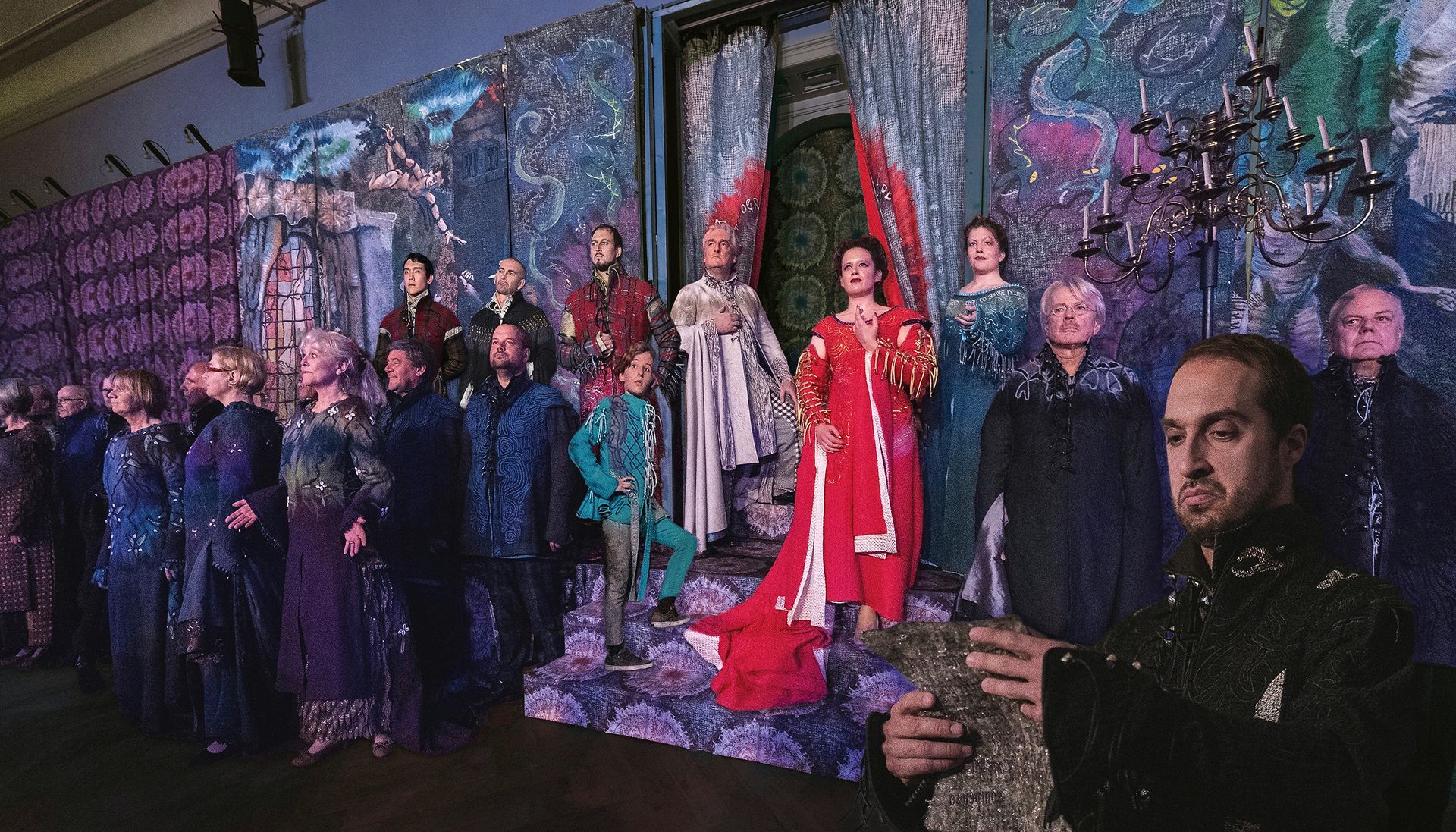10 PANEL TAPESTRY
De Hubris—about pride
Created as a tapestry installation for the 2016/2017 performances of Bellini’s opera Bianca e Fernando by Opéra Engiadina in St Moritz, Switzerland,
De Hubris—about pride
traces a path from myth to opera, from revolt to revelation.
What began as textile scenography design quickly evolved into a deeper meditation on pride—hubris—which I see as the opera’s core theme. The tapestry became a space where visual storytelling and moral inquiry converge.
De Hubris traces a path from myth to opera, from revolt to revelation. Whether through Daedalus, Icarus, Minos, Eve, or the wars of men and gods, I return again and again to the same idea: pride, when unchecked, unravels everything. It’s a theme that never stops speaking to us—because we never quite stop needing to hear it.
Perspective and Integration
The work is constructed on a strong perspectival grid. Onstage, this structure suggested depth; conceptually, it allowed me to merge the soloists with their surroundings. My aim was to blur the boundaries between figure and background, so the performers became part of a single painterly composition.
10 PANEL TAPESTRY
De Hubris—about pride
The opera’s setting in Sicily—and Bellini’s subtle defiance of Neapolitan rule—inspired me to reference the Sicilian Vespers, a 13th-century revolt against foreign rule. This long conflict laid the groundwork for the Kingdom of the Two Sicilies. Bellini’s original title, Bianca e Ferdinand, was censored by King Ferdinand of Naples. Only after renaming it Bianca e Fernando was the opera permitted to be staged.
Perdix: A Quiet Warning
Panel 1 (detail below): In the lower left, I placed Perdix, the inventive nephew of Daedalus. After creating the saw by studying fish anatomy—visible near him—he was thrown from the Acropolis in a jealous rage. Athena intervened, transforming him into a partridge. Here, he holds a skull and a crown: a quiet warning about the vanity and transience of power.
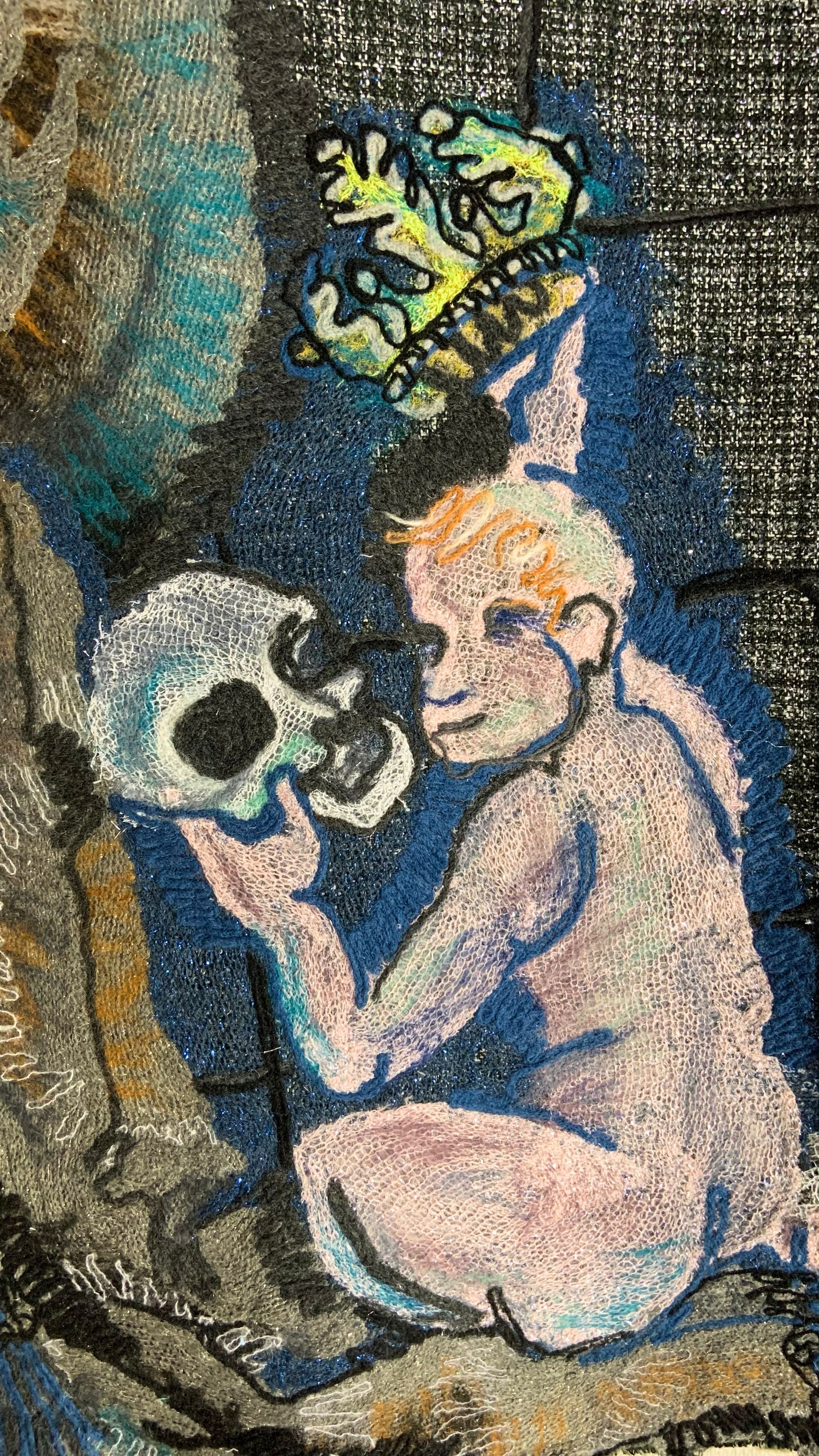
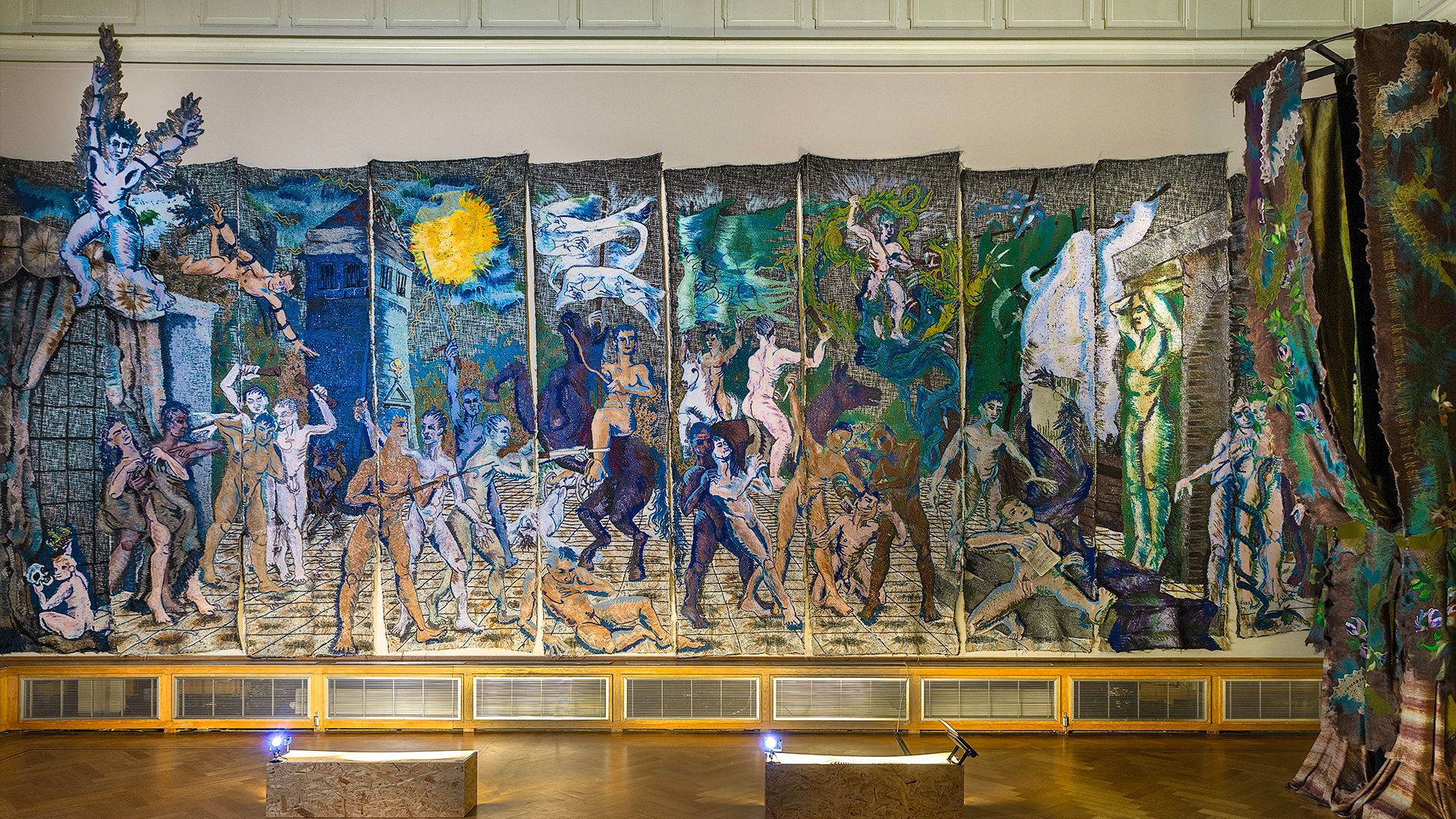
The Cretan Thread
In panel [nr], we follow Daedalus to Crete, where he serves King Minos—a ruler punished by the gods for his deceit. The Minotaur appears near a tower, linked by thread to a bowl of yarn. This visual thread alludes to the Labyrinth Daedalus constructed to contain the beast. Imprisoned for his knowledge, he and his son Icarus would later escape with wax-and-feather wings.
Icarus and the Limits of Ascent
Panels 1 -3: At the top left, Icarus rises—and falls. His wings melt in the sun, and he crashes to his death. This image, so familiar in Western art, remains one of the most potent expressions of hubris: ambition without restraint, punished by nature and the divine
Classical Tragedy: The Furies and Orestes
Between the window and the tower, I included a scene from Aeschylus’s Oresteia. The Furies pursue Orestes for avenging his father’s murder by killing his mother. This panel was inspired by a painting by William-Adolphe Bouguereau and adds another layer of mythic pride and consequence..
Revolt and Representation
At the center of the tapestry, I’ve illustrated the 1837 Sicilian uprising, drawing from Francesco Hayez and period sketches. This moment of revolution echoes the opera’s themes of resistance, illusion, and political pride—and the price paid for it.
Saint George and the Wars of Faith
In the seventh panel, Saint George slays the dragon. Here, the dragon represents centuries of religious conflict between Islam and Christianity. Two ships land on Sicily’s shores, flying flags adorned with camels and lions—symbols of their respective faiths. To me, these wars are the most tragic manifestation of hubris: the belief that one has exclusive access to divine truth. I see God as singular, with faiths being different ways of speaking to the same mystery.
Saint Peter in Felted Glass
In a window-like frame, I created a stained glass effect from felted textile. It features Saint Peter, crucified upside down for denying Christ. A divine hand offers him the keys to Paradise—a symbol of grace after failure. Saint Peter and Saint George, who appears later, are both patron saints of mine and key spiritual figures in this work.
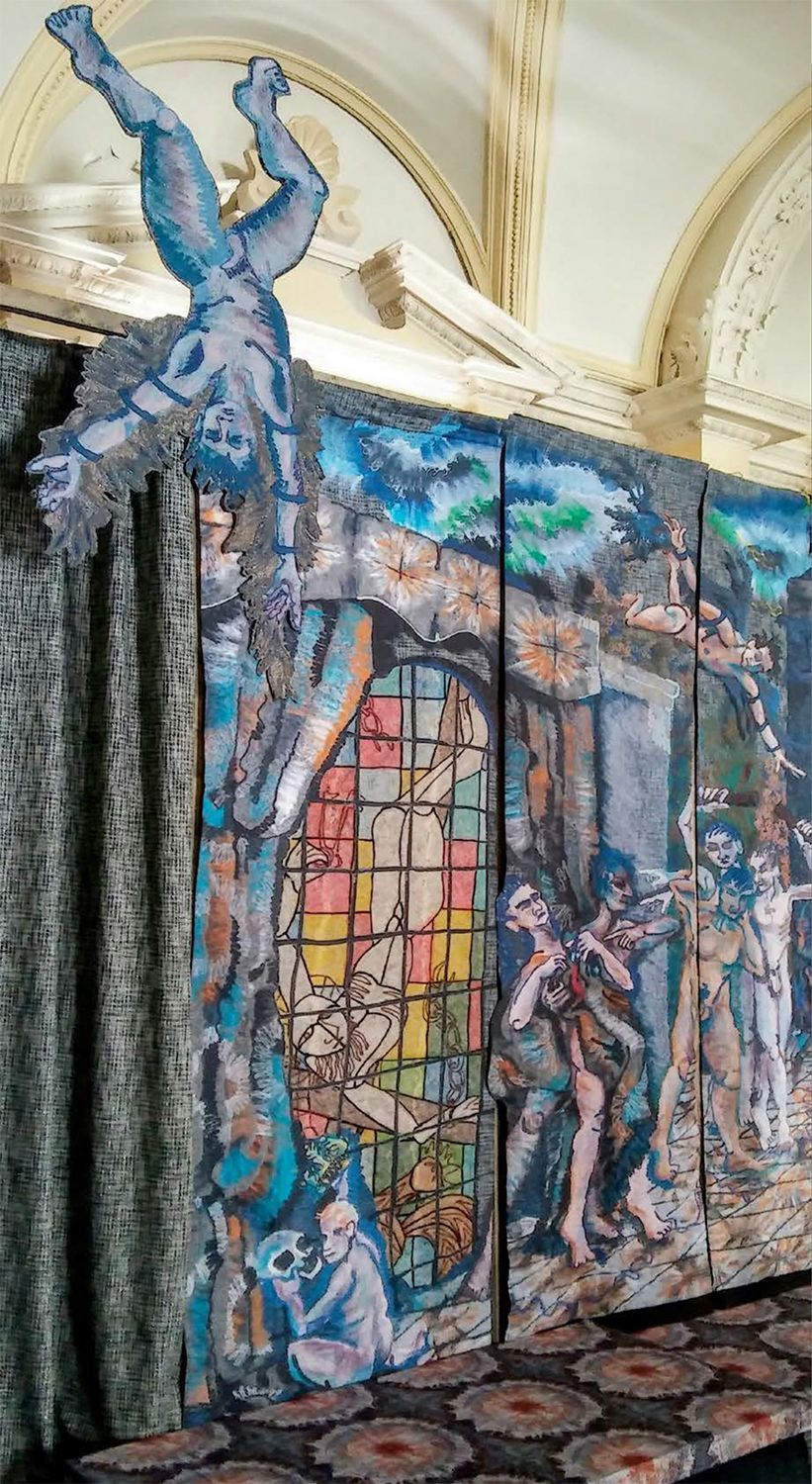
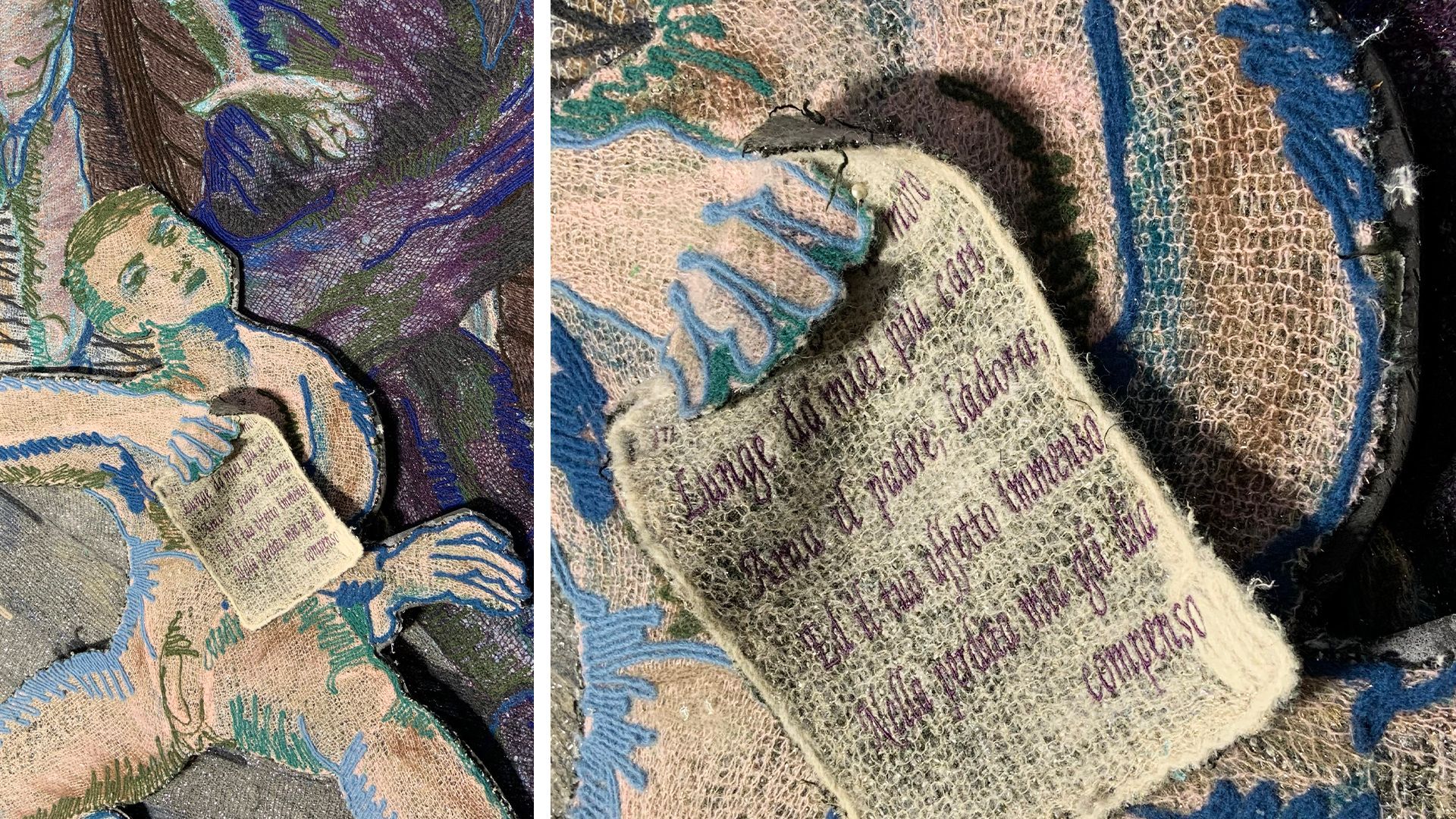
The Illusion of Death
Near the edge, a figure stands holding a letter—Fernando’s farewell to Bianca. In the opera, he pretends to have died in Scotland. This figure is separated from the main scene and is later removed, symbolizing the shifting lines between presence and absence, truth and performance.
The Gate to Valhalla and the Fall of Innocence
On the far right is the gate to Valhalla. Giants Fafner and Fasolt support the frieze above, inscribed with a line from Wagner’s Ring:
“Was mächtig der Furcht, mein Mut mir erfand…”
(“How mighty the fear that my courage invented…”)
Beyond the gate lies Eden. Adam and Eve reach for the forbidden fruit—a final image of hubris, which ends in exile.
OPERA ENGIADINA
Bianca e Fernando
Opera Direction, Scenography, Stage Couture: Peter George d'Angelino Tap
Producer: Opéra Engiadina
Conductor: Thomas Herzog
The production was staged at Maloja Palace in St Moritz, Switzerland, in 2016 and 2017.
Cast: Eva Fiechter, Michael Feyfar, Martin Snell, Flurin Caduff, Riccardo di Francesco, Lamia Beuque, James Park, Anna Nero
